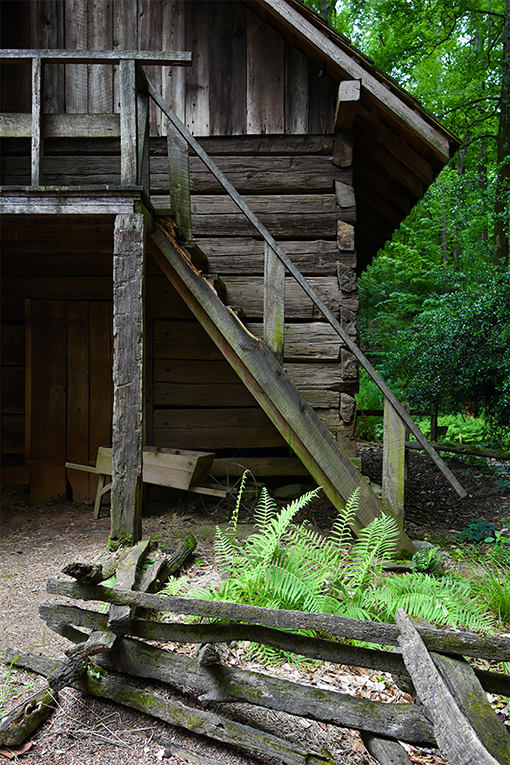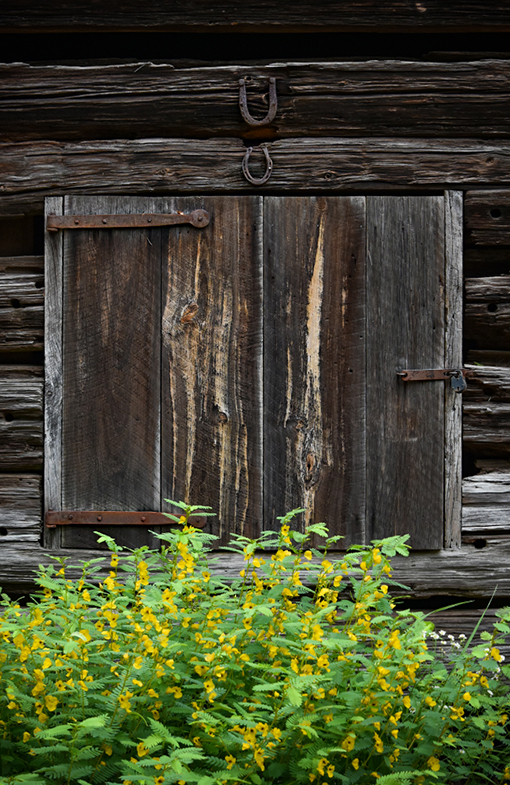 |
| Smith Family Farm | Atlanta History Center | Photo: Travis Swann Taylor |
The house was acquired by the Atlanta History Center in 1969 (then the Atlanta Historical Society) when the last surviving relative of Robert and Elizabeth's, Tullie Smith, passed away.
The farmhouse first opened to the public--to great fanfare--in 1972. A September 1972 article in The Atlanta Constitution announced a barbecue benefit--"an old-fashioned hoedown"--to take place in the front yard of the farmhouse, complete with square dancing, barbecue, and a hayride for youngsters. Nearly 50 years later, they're still hosting events in the Smith Family Farm gardens!
The front yard is a "swept yard" and the gardens in the yard and by the house feature heirloom flowers. A crepe myrtle had been moved from the original farmhouse location and planted in front of the house. I'm not sure if that same crepe myrtle is still there, but I'm guessing not, given the lifespan of crepe myrtles, but how cool that that was done!
Did you know that crepe myrtles species are named after Native American tribes?
Before Sheffield Hale, President & CEO, came to the Atlanta History Center, there were no animals at the Smith Family Farm. Today there are lots! And they're all heritage-breed. There are sheep, Angora goats, chickens, and turkeys, which are representative of the types of livestock that would have been found on this type of farm.
The Center has a "Live Sheep & Goat Cam"! (at the bottom of the page at that link) At the time of this writing, it's on a "quarantine schedule". Check the cam 8am-11am for the best chance of seeing these adorable creatures. They've been quite active when I've visited, so hopefully you can see them too, before you visit in-person.
When you're visiting the gardens here, if the farmhouse is open there's likely to be an interpreter present who can tell you about 1840s farm life, and on certain occasions, you might even get to see someone working the period weaving loom!
The Smith's moved from North Carolina to DeKalb County, Georgia, to take over Robert's brother's 800-acre farm. It was located at the intersection of Briarcliff Road, North Druid Hills Road, and Interstate-85, not far from where I live now, so I know this locale very well. It's hard to imagine such a large farm only minutes (by car) from Midtown and Downtown Atlanta.
Originally, in 1972, five local garden clubs developed the grounds around the farmhouse. They were the Mimosa, Magnolia, Ivy, Brookview, and Piedmont garden clubs, some of them active since the 1920s!
There are numerous gardens at the farm, planted with historic varieties of crops in the fields, the enslaved people’s garden, and the kitchen garden.
From time-to-time, the Center will invite celebrity chefs to cook for an event, special event, or a private dinner, and they often use produce from the Smith Family Farm gardens, which are plentiful!
Pictured above is Michael W. Twitty, author, culinary historian, blogger, and James Beard award winner, at the Atlanta History Center's annual Folk Life Festival in 2017. A couple of days before, Twitty did a book signing, part of the Center's Author Program. For this particular event, Twitty was in the detached kitchen. In that time period, kitchens were often separate buildings from the home. If it caught fire, the home itself was less likely to burn down.
The kitchen is one of the original structures at the Smith Family Farm that was moved here in 1972. The well house, adjacent to the kitchen and farmhouse, was donated by one of the local garden clubs.
While the photos I'm sharing in this post show a lot of natural growth, the paths throughout the farm are spacious, allowing guests to leisurely meander while contemplating Georgia farm life 180 years ago.
Many of the other buildings are original structures, bought here from different parts of Georgia to represent their respective aspects of the 1840s farm. Those include the enslaved people’s cabin, the blacksmith shop, smokehouse, corncrib, chicken coop, barn, dairy, and an outhouse.
You know as soon as you arrive that you've stepped back in time. This is a view of the goat and sheep house as approached coming from the history museums. There are also entrances from the Quarry Garden and a path leading from the Swan House.
During certain special events, this is where you'll see actual blacksmith work happening. Many of us have seen it on television, whether in a documentary or perhaps in a fictional film set in Medieval times, but this is live and in person...and very cool!
The colorful plantings on the east side of the structure are a beautiful contrast to the faded wood sides and roof.
If you've ever hung a horseshoe you know to hang it with the open end up, so that your good luck doesn't spill out. There's some contention on whether it should hang up or down...you decide. I've always gone with how they're hung here.
The plantings around Smith Family Farm are abundant! Enjoy the many gardens--flowers and produce--and other native plantings here at the Atlanta History Center.
The Other Gardens: This is the fifth post in a series sharing the beauty of the nine gardens on the Atlanta History Center's 33-acre campus. You can find them all here.









No comments:
Post a Comment